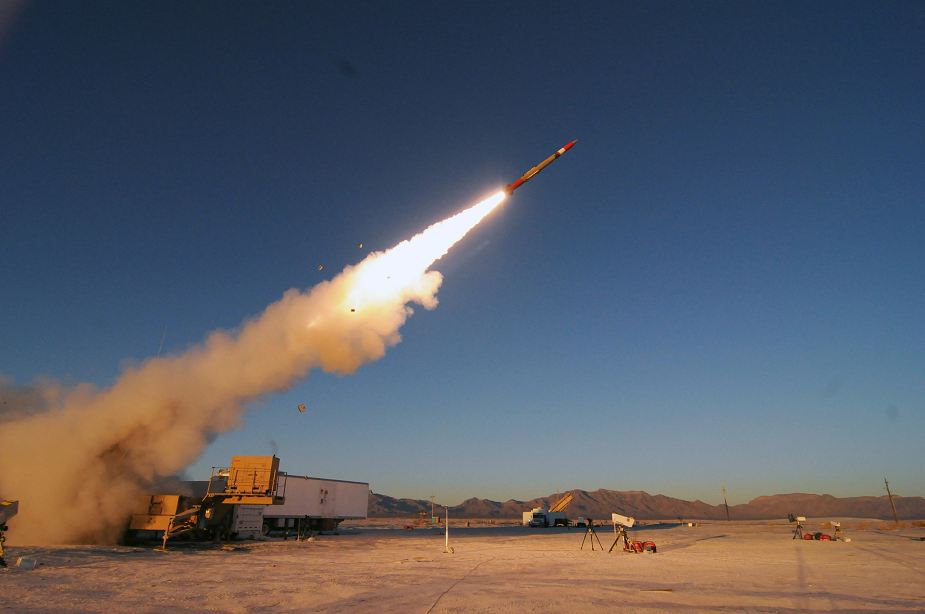Breaking news
New distance record for Patriot PAC-3 MSE air defense missile system.
The U.S. Army-led missile defense flight test demonstrated the unique Hit-to-Kill capability of the Patriot PAC-3 family of missiles, which defends against threats through body-to-body contact. The test also reconfirmed PAC-3 MSE's ability to detect, track and intercept incoming ABTs or missiles. The test was observed by representatives from the U.S. Army and a current Foreign Military Sales PAC-3 MSE customer.

The PAC-3 Missile Segment Enhancement (MSE) interceptor set a distance record in its latest flight test with the longest one-shot hit-to-kill intercept against an Air-Breathing Threat at White Sands Missile Range on July 26, 2018. (Picture source Lockheed Martin)
"Patriot PAC-3 MSE continues to be successful against today's evolving threats, and this most recent test validates its effectiveness at extreme distances," said Jay Pitman, vice president of PAC-3 programs at Lockheed Martin Missiles and Fire Control. "Today's global security environment demands reliable solutions. We expect PAC-3 Hit-to-Kill interceptors to continue serving as an essential element in integrated, layered defense systems."
The PAC-3 CRI and MSE are high-velocity interceptors that defend against incoming threats, including tactical ballistic missiles, cruise missiles and aircraft. Twelve nations have procured the PAC-3 missile defense interceptor: the U.S., Germany, Kuwait, Japan, Qatar, Republic of Korea, Kingdom of Saudi Arabia, Taiwan, Romania, Poland, the Netherlands and the United Arab Emirates.
Developed by Lockheed Martin, the PAC-3 CRI intercepts support the US Army’s field surveillance programme (FSP), ensuring the reliability and readiness of fielded PAC-3 missiles.
The PAC-3 Missile Segment Enhancement (MSE) is an evolution of the battle-proven PAC-3 Missile. The hit-to-kill PAC-3 MSE provides performance enhancements that counter evolving threat advancements.
A world leader in systems integration and development of air and missile defense systems and technologies, Lockheed Martin's experience spans missile design and production, infrared seekers, command and control/battle management, as well as communications, precision pointing and tracking optics, radar and signal processing, and threat-representative targets for missile defense tests.


























